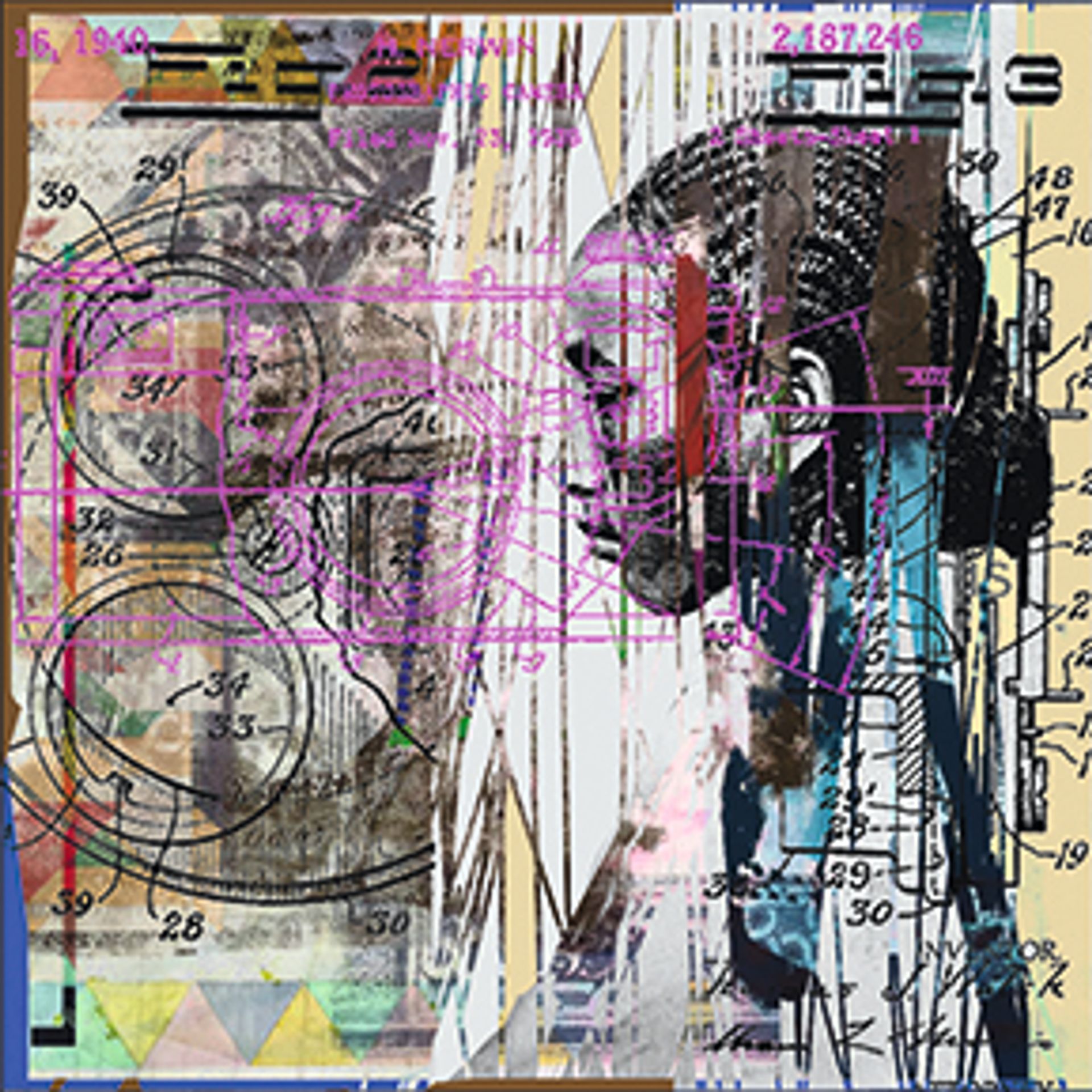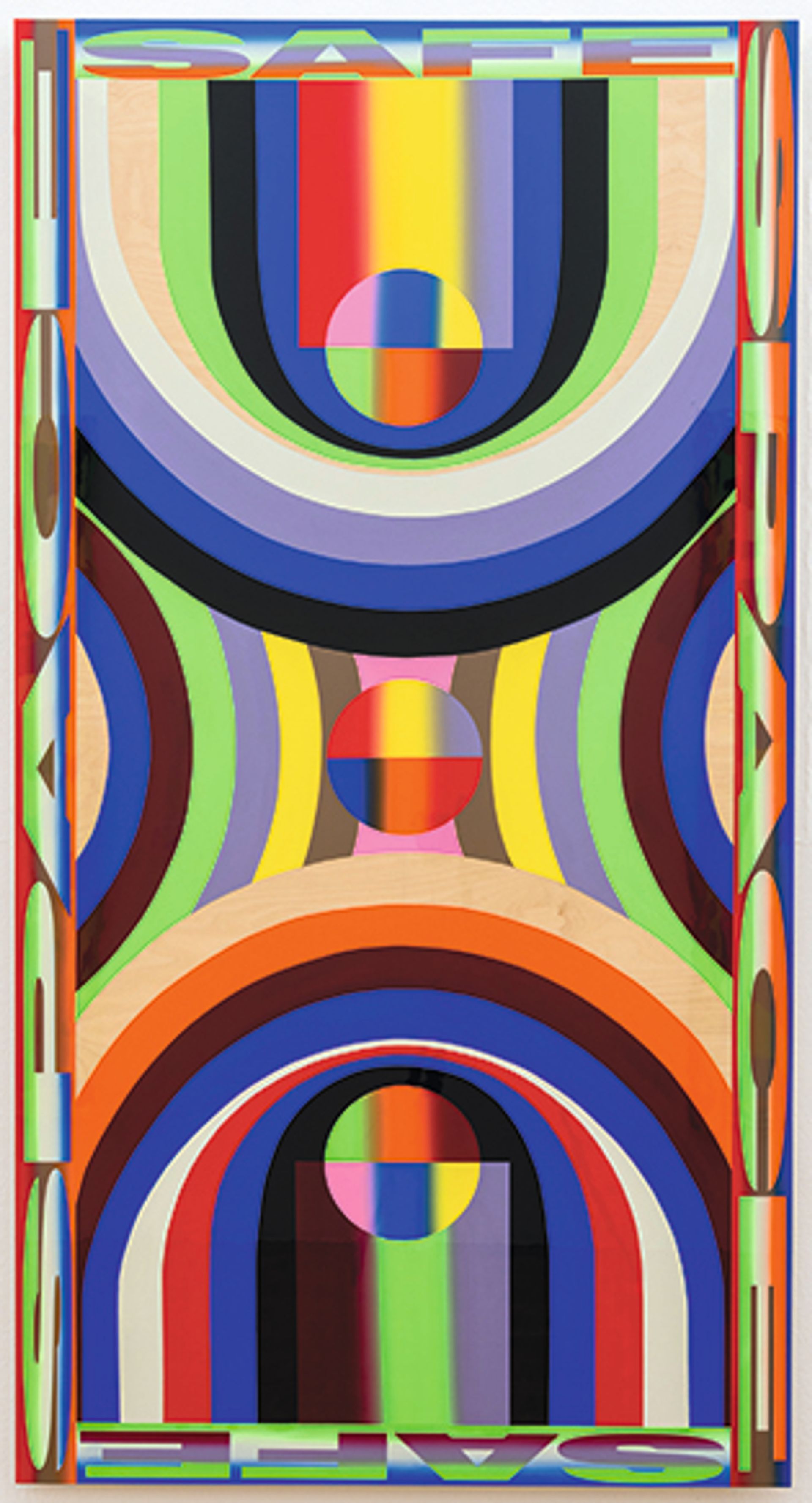Nigerian artists and the country’s burgeoning arts scene are in the spotlight in London this week. Five Nigerian-based galleries are participating in the 11th edition of 1-54 Contemporary African Art Fair at Somerset House (until 15 October), while a series of auctions in aid of the Museum of West African Art (Mowaa), due to launch in Benin City in 2027, and the Nigeria pavilion at the 2024 Venice Biennale, are due to take place at Christie’s London this weekend.
The upswing in demand for artists from the West African country is reflected in ArtTactic’s African art market report (2022), which noted that sales values at auction of Nigerian artists increased by 25.6% from $9.7m in 2021 to $12.1m in 2022.
At Frieze Masters, the Lagos-based kó gallery—the only African gallery showing at the fair—is presenting a solo stand of the late Nigerian artist Ben Enwonwu’s work. In 2019, his painting Christine (1971) sold for £1.1m at Sotheby's Modern and Contemporary African Art Auction in 2019, strengthening the market for the man considered to be Nigeria’s master of Modernism.
In 2018, Bonhams sold Tutu by Enwonwu in London for £1.2m (with fees), setting the auction record for a work by the artist. Earlier this month Bonhams sold another work by Enwowu, Yoruba Woman in Blue (1973), for £686,200 (estimate £250,000-£350,000).
At the fair, Enwonwu’s paintings and sculptures have been consigned by his family as well as local and international collectors. Indeed, due to the weakening of the Nigerian currency, the naira, Nigerian collectors looking to sell are increasingly keen for works to go abroad to cities like London, where proceeds can be boosted by stronger currency, Kavita Chellaram, the gallery’s founder, tells The Art Newspaper.
The market for Nigerian art, while bubbling, might well be tested this week. Lagos-based Wunika Mukan gallery is participating in 1-54 for the first time, showing a solo presentation dedicated to the Nigerian artist Victor Ubah whose works are inspired by Cubism (priced at £9,500).
Knowledgeable collectors
“The market for Nigerian artists exploded a little while ago and things are calming down. Prices are still strong, and demand is high for some contemporary artists. There are many collectors in Lagos who are very knowledgeable, mainly in the 45-60 age range. In London, there is [generally] a strong African art presence,” Wunika Mukan says.
Another 1-54 first-timer, Lagos-based Affinity Gallery, is showing works by two Nigerian artists: the painter Damilola Onosowobo and the ceramicist Anne Adams (priced between £6,500 and £8,500). “We are looking to expand our collector base and knowledge of what Nigerian art is,” says the gallery manager Moni Aisida.

Table for you and a few (2023) is one of the paintings by Damilola Onosowobo, being shown by Lagos-based Affinity Gallery
Courtesy of Affinity Gallery
Sandra Mbanefo Obiago, the founder of SMO Contemporary Art gallery from Lagos, notes that the country is experiencing a “cultural renaissance” despite the background of “political and economic challenges”. In February, Nigerian voters went to the polls to elect a new president, which could have heralded a moment of transformation for Nigeria’s artists and museums, but in fact resulted in “a huge devaluation of currency,” Obiago says.
Her gallery is showing three artists “across three generations” including Victor Sonoiki who is unveiling a new body of works entitled When Love Is Right (2023, priced between £4,600 and £4,800). “This is our sixth year; 1-54 works for us as a platform; we’re trying to bring some balance to the African art narrative.”
The Mowaa auction is meanwhile another key marker this week for the market. Isabel Bardawil, a specialist in post-war and contemporary art at Christie’s, points out that many of the works consigned have been donated by artists and private collectors. “
“The estimates are in line with auction results and primary sales,” she says. The lots are divided across three auctions including the post-war and contemporary art sale on 14 October. “We have a much more international client base [across the sales] but hopefully we’ll see more Nigerian collectors because of context,” Bardawil adds.
The ink on paper piece Bird (1974), by the late artist Ben Osawe, has a low estimate of £1,000 to £2,000 which is “conservative”, says Bardawil while the value of the NFT work by Osinachi, Rain:Field (2023; estimate £20,000 to £30,000), is based on a series sold by Christie’s after they were displayed at 1-54 in 2021.
Dolly Kola-Balogun, the founder of the Abuja-based Retro Africa gallery and a consultant for the Kwara State government, says 1-54 London helps bring Nigerian collectors to the fore. “It has a fair share of European, American and Asian collectors but I love that African collectors don’t play second fiddle in this space. Nigerian collectors most especially seem to be major power brokers and have increasingly positioned themselves in this role.”
UPDATE: This article was amended to show that the work Christine by Ben Enwonwu was sold at Sotheby's in 2019.
Three to see: 1-54

Courtesy of the artist and Kristin Hjellegjerde Gallery
Wendimagegn Belete, Between Matter and Memory series (2023), £10,000- £25,000, Kristin Hjellegjerde Gallery
The Ethiopian artist Wendimagegn Belete mixes things up in a series of silkscreen paintings touching on themes such as colonialism, exploring especially how “Western perspectives have often portrayed other cultures and regions in a simplistic and skewed manner”, says a gallery statement. The works combine archive images from early 20th-century Africa and technical drawings of camera equipment.

Courtesy of Efie gallery
J.K. Bruce-Vanderpuije, Accra Optimists Club (1930s), £14,000 (edition 2 of 3), Efie Gallery
J.K. Bruce-Vanderpuije was one of the few commercial photographers working in Accra in the 1920s. “This image shows a Black gentleman’s club at the height of colonialism,” says Kwame Mintah, the director of Efie Gallery. The Bruce-Vanderpuije family has since amassed the world’s largest collection of Ghanaian photographs (the artist’s estate is held by the Deo Gratias studio in Accra).

Courtesy of the artist and Vigo Gallery
Lakwena Maciver, Gary (2022), £24,500, Vigo Gallery
Lakwena Maciver’s Jump paintings consist of abstract portraits of celebrated basketball players. “Maciver takes physical and biographic references as a starting point,” says a gallery statement. “I like the notion of the basketball court as a platform or stage where the players become almost like superheroes…these paintings are about being aspirational, dreaming and the connection between people,” says the artist.


